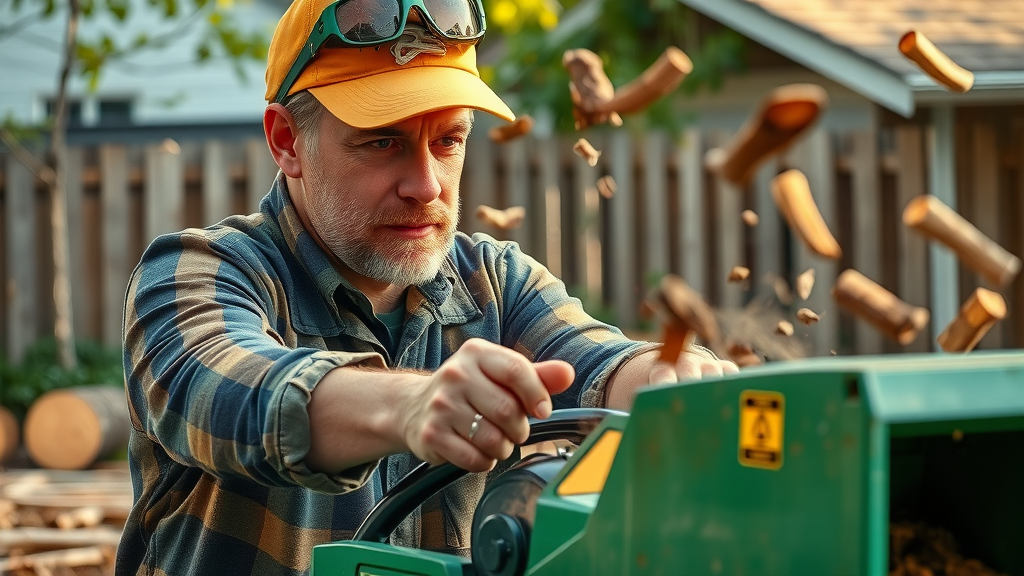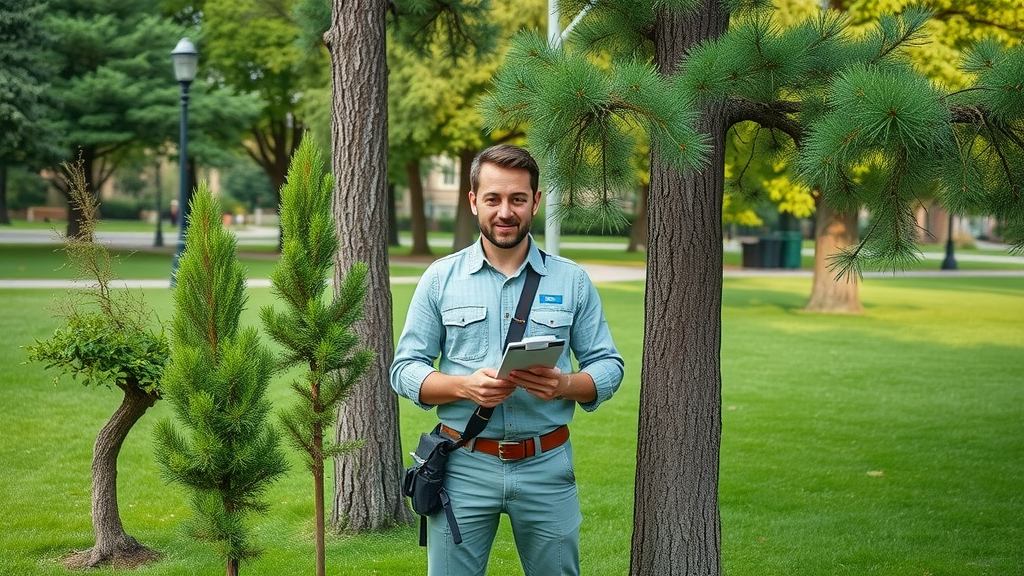Did you know? A recent industry survey revealed that homeowners attempting DIY tree removal experienced injuries or property damage in over 20% of cases—often racking up costs twice as high as hiring a professional in the first place! Tree removal cost isn’t just about the numbers; it’s about protecting your safety and your finances. In this comprehensive guide, you’ll uncover must-know insights about tree removal costs, the surprising factors that influence them, and pro tips to keep your landscape plans—and your wallet—disaster-free.
Eye-Opening Facts: Understanding Tree Removal Cost
- Statistics show that improper or DIY removal can double your costs due to missed hazards and necessary repairs.
- Professional tree removal services have specialized tools, safety training, and insurance to manage risks efficiently.
- Even for a small tree under 25 feet tall, unexpected factors—like power line proximity or underground utilities—can dramatically affect your removal cost.

What You'll Learn About Tree Removal Cost
- Key facts about tree removal cost—what drives the price and how to avoid hidden expenses.
- How regional location and the type or size of tree can swing removal costs dramatically.
- Why hiring a pro can save more money—and headaches—than you might think.
- Questions to ask your tree removal company for a fair, accurate price and safe results.
Breaking Down Tree Removal Cost: The Complete Guide
Defining Tree Removal Cost—What’s Included?
- The tree removal cost typically includes skilled labor, use of professional equipment, securing the work zone, and cleaning up debris after cutting. Costs can also factor in hauling away branches and logs, especially with large tree removal projects that generate a high volume of waste.
- Some companies may offer bundled prices, while others list each step—such as stump removal and final site restoration—as separate lines on your invoice. Before you move a tree or remove a tree, always get an itemized breakdown of what each removal cost covers, and verify if post-removal cleanup or wood chipping is included.

Average Cost of Tree Removal in the U.S.
Understanding the average cost for tree removal across the U.S. can help you set expectations before requesting a quote. On a national scale, the cost of tree removal fluctuates depending on several key factors—from the size of the tree and its accessibility, to extras like stump removal or emergency tree removal service. Knowing what’s typical can prevent you from overpaying or accepting a suspiciously low estimate that may come with risks.
| Tree Removal Cost Type | National Average | Low End | High End | Key Influential Factors |
|---|---|---|---|---|
| Standard Tree (30-60 feet tall) | $650 | $150 | $2,100+ | Tree size, type, site access, proximity to power lines, emergency needs |
| Small Tree (under 25 feet) | $300 | $150 | $500 | Accessibility, type of tree, root spread, removal service |
| Large Tree (over 80 feet tall) | $1,850 | $900 | $6,000+ | Crane use, hazards, emergency tree removal, special equipment |
| Stump Removal (per stump) | $125 | $60 | $350 | Stump diameter, root complexity, site accessibility |
When considering the full scope of tree removal, it's important to recognize that hazardous trees or those posing immediate safety risks can significantly increase both complexity and cost. For a deeper look at how to handle urgent situations and ensure your property’s safety, explore this guide on hazardous tree removal and the steps to protect your home.
Factors That Impact Tree Removal Cost
Type of Tree and Size of the Tree
- The type of tree—whether hardwood or softwood—directly influences removal difficulty and cost. For example, dense hardwood species like oak or maple are heavier and require more effort than removing pine or birch trees.
- Likewise, the size of the tree is crucial. Removing a small tree that’s 20 feet tall versus a large tree soaring above 80 feet can mean the difference between a simple job and a major, multistep operation involving heavy equipment and a larger team. Larger, broader trees are not only heavier, but can also present root systems that complicate removal.
- Always communicate both the species and approximate height or diameter when requesting a tree removal quote. This ensures a more precise estimate and no costly last-minute surprises.

Location, Accessibility, and Proximity Hazards
- Where your tree stands is often as important as what kind of tree it is. A tree in a wide-open yard is usually less expensive to remove than a tree wedged between homes, under power lines, or near fences.
- Urban locations, tight lots, and trees adjacent to structures or power lines drive up tree removal costs because crews may need to spend more time, use cranes, or implement extra safety measures. If a tree must be lifted over a house or carefully sectioned to prevent property damage, expect your removal service quote to climb accordingly.
- Homeowners should also note if their tree removal project could affect sidewalks or city infrastructure, which often requires special permits, insurance checks, or city coordination.
Comparing Removal Costs for Different Tree Types
| Tree Species | Small (15-30 ft) | Medium (30-60 ft) | Large (60-100+ ft) | Region/Notes |
|---|---|---|---|---|
| Maple | $300–$600 | $500–$1,200 | $1,200–$3,000 | Northeast, Midwest (heavier wood, higher cost) |
| Pine | $250–$500 | $400–$1,100 | $1,000–$2,500 | Southeast, West (lighter wood, easier removal) |
| Oak | $350–$750 | $700–$1,500 | $1,500–$4,000 | Nationwide (dense, very large root system) |
| Birch | $250–$500 | $400–$900 | $900–$2,000 | Northern regions (medium density, moderate roots) |
| Palm | $200–$500 | $350–$850 | $850–$2,200 | Southeast, Southwest (root ball complexity) |
Stump Removal and Cleanup: Additional Tree Removal Costs You Should Expect
- While the main tree removal cost covers the felling and branch cleanup, many homeowners are surprised to find stump removal is often a separate charge—averaging $125 per stump depending on size and accessibility.
- Debris hauling, wood splitting, and site restoration (e.g., grass or replanting after large tree removal) can add $100–$500 depending on your lot size and how clean you want the area afterward.
- Don’t forget to clarify which service the tree removal company includes in their quote. Always ask for a breakdown “from root to final rake”—it’s the best way to spot hidden removal costs and avoid last-minute price hikes.

Emergency Tree Removal Cost: What Makes It More Expensive?
- When a tree is severely storm-damaged, risks falling on a structure, or threatens power lines, emergency tree removal becomes urgent—and that urgency comes at a premium. Emergency jobs often require after-hours or weekend crew calls, special insurance, and equipment like cranes or traffic control.
- The removal cost for emergency jobs can be double or triple the standard rate, as crews need to work quickly and safely in hazardous conditions. Always photograph the hazard if safe, contact your insurance provider, and get multiple quotes from licensed pros to control costs.
- Remember—a tree collapsing onto your home is far more expensive than a preventive emergency removal. Choose safety first when in doubt about a tree’s stability after a storm.
Expert Quote: “Many emergency tree removal situations carry hidden expenses—tree stabilization, overtime labor, and urgent permitting can all add to your final bill. Always ask your removal service for a complete, written estimate before they begin work.” — Certified Arborist, North American Tree Care Association
Do-It-Yourself vs. Professional Tree Removal Cost
- Many homeowners are tempted to move a tree or cut it down themselves to save money. But, the real cost of DIY tree removal can skyrocket with personal risk, property damage, and improper debris disposal—and injuries are all too common.
- Professional tree removal services leverage specialized training, insurance, and equipment for efficient, safe tree removal. For jobs above 10 feet tall, near power lines, or involving large trees, hiring a pro is strongly recommended.
- Weigh the risks: a professional tree removal may seem more expensive, but avoiding damage, hospital bills, and code violations is priceless in the long run. If you’re determined to attempt DIY for a small tree, always review local regulations and potential permitting needs first.

Safety Quote: “When it comes to the true tree removal cost, don’t forget to factor in liability. If a neighbor’s fence, car, or your own roof gets damaged during DIY removal, you’ll pay far more than a professional’s invoice—often without insurance coverage.” — Hazard Assessment Specialist, Tree Removal Expert.com
How to Choose Tree Removal Services and Control Removal Costs
- Price isn’t the only factor in choosing a removal company. Confirm insurance, references, and proper licensing before you sign anything.
- Get written, detailed quotes (not just ballpark prices), and clarify what each removal cost includes—especially regarding debris disposal, site cleanup, and stump removal.
- Ask about bundled services: often, companies offer discounts if you remove multiple trees or combine tree and stump removal in one visit.
- Checklist for Choosing a Tree Removal Service:
- Are you fully licensed and insured?
- What’s your experience with my type of tree?
- Can I see recent client references or reviews?
- Does your quote include stump removal and full cleanup?
- What’s your estimated timeline for completion?
- Do you handle permit applications if required?
- How do you manage property protection and post-job inspection?
People Also Ask: Tree Removal Cost Questions Answered
What is the average cost of tree removal in my area?
- Local tree removal cost is shaped by your tree’s size, species, location, and how easy it is for crews to access. Tree removal costs may also depend on local demand, urban constraints, and whether the job risks interfering with power lines or structures. The best way to estimate your specific price is to request free, in-person quotes from multiple tree service companies in your region—ideally with detailed line items covering all stages of removal.
How much does it cost to cut down a tree in New Jersey?
- In New Jersey, the cost of tree removal typically ranges from $400–$1,300 for small to medium trees. Large, mature trees—especially oaks or maples—can exceed $2,500 due to denser wood and common proximity to power lines or houses. Regional considerations include stricter municipal permitting, debris disposal fees, and seasonal fluctuations in tree removal service demand.
How much does it cost to cut down a tree in Tennessee?
- The tree removal cost in Tennessee generally runs from $300–$1,200 for standard jobs, with large tree removals potentially higher depending on site constraints or emergency service needs after storms. Rural areas often offer slightly lower prices due to easier access and lower labor rates, but factors like steep terrain, tornado damage, or out-of-town hauling can increase your final bill.
What time of year is the cheapest for tree removal?
- Tree removal service companies are busiest in spring and summer storm seasons—so scheduling in late fall or winter, when demand drops, can save you up to 20%. Many companies offer off-peak discounts, and frozen ground may even make equipment access easier for removing a large tree. Avoid booking during emergency periods unless urgent to secure the best removal cost.

FAQs About Tree Removal Cost
-
Do I need a permit to remove a tree?
In many municipalities, especially in urban or historic neighborhoods, a permit is required for tree removal—check local codes before hiring a service company. -
Will my homeowners’ insurance cover tree removal?
Insurance typically pays for tree removal only if the tree is a hazard due to a covered peril (storm, lightning) threatening insured property. Preventive removals are rarely covered. -
How much should I budget for removing a large tree?
Large tree removal costs range from $1,000 to $4,000 or more, depending on species, height of the tree, obstacles, and the need for cranes or specialized safety gear. -
Can I get a discount by combining tree, stump, and debris removal?
Yes, many tree removal companies offer bundled pricing if you combine services—always ask if there’s a package deal or ongoing promotions before you decide.
Key Takeaways: What Every Homeowner Should Know About Tree Removal Cost
- Get itemized, written removal cost estimates—never settle for ballpark figures.
- Tree type, size, and location are the biggest drivers of removal costs. Large or hard-to-reach trees cost more.
- Don’t skip the stump! Add stump removal and cleanup to avoid future headaches.
- Emergency tree removals cost more—but prevention is always cheaper than repairs after a fall.
- Choose insured, licensed pros to avoid liability, injury, or property damage during tree removal.
Expand Your Knowledge and Save: Next Steps
- Grow your landscaping expertise—call 203-271-7991 or visit TreeGuardianNews.com to subscribe for more must-know tips about cost of tree removal, landscaping, and property protection.
If you’re ready to take your understanding of tree removal to the next level, consider how emergency scenarios can impact your decision-making and budget. Discover practical strategies for handling urgent tree issues, minimizing risk, and making informed choices when time is of the essence by reading this comprehensive resource on emergency tree removal. By equipping yourself with advanced knowledge, you’ll be better prepared to safeguard your property and avoid costly surprises—no matter what nature throws your way. Continue exploring to stay ahead of potential hazards and ensure your landscape remains both beautiful and secure.
- Watch below: A certified arborist walks you through a real tree removal from estimate to final cleanup, highlighting how tree size, type, accessibility, and emergency needs affect the total tree removal cost—plus essential tips for homeowners to manage expenses and avoid costly mistakes!
Understanding the costs associated with tree removal is crucial for homeowners aiming to manage their landscapes effectively and safely. For a comprehensive breakdown of these expenses, including factors that influence pricing and average costs based on tree size, refer to the article “Tree Removal Cost | Cost to Cut Down a Tree” on Fixr. This resource provides detailed insights into the various elements that can affect the overall cost of tree removal.
Additionally, for a broader perspective on tree service expenses, including trimming and other related services, the article “Tree Service Costs & Tips for Removal, Trimming & More” on Modernize offers valuable information. It covers a range of services and their associated costs, helping homeowners make informed decisions about their tree care needs.
By consulting these resources, you can gain a clearer understanding of the financial aspects of tree removal and related services, enabling you to plan and budget accordingly.
 Add Row
Add Row  Add
Add 




Write A Comment